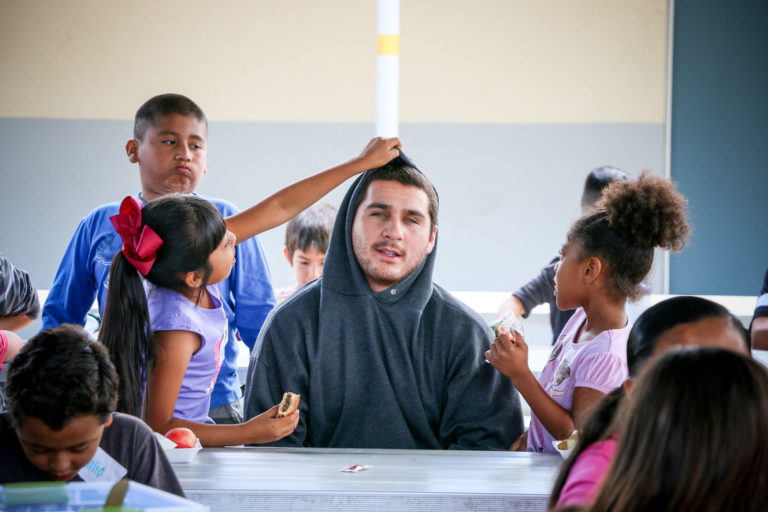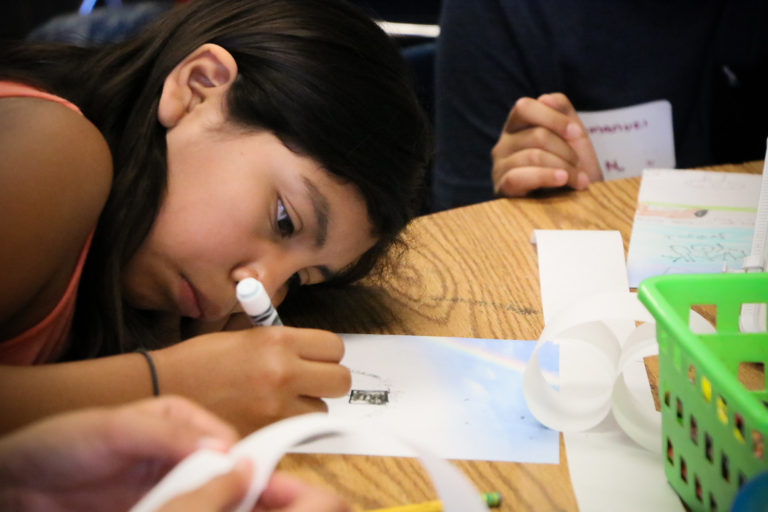One of the great joys of my job is to equip teachers and school administrators about the need to create safe and accessible classrooms and school settings for their most vulnerable students. I’ve been able to present workshops about how to build Trauma-Informed Classrooms for many local educators in the last 9 months and it has been so awesome to see the impact it has had on both the teachers and the students.
In a recent training series, I was working with a 4th grade teacher and helping her and her co-workers to understand the prevalence and impact of trauma on the children that they were serving. As we were unpacking how certain experiences literally change the development of the brain and how those children have had to develop adaptive strategies, I saw a flash of recognition on this teacher’s face as she connected the history of one of her students with his behaviors in the classroom.
After the presentation, she approached me and spoke of one of her students that struggled to stay in his seat in the classroom. He was always bumping into people, crashing into things, and had difficulty focusing on tasks. As we examined some of the challenges facing this student, I kept coming back to the principle that all behavior is communication. Our job was to determine what the student was telling us he needed. The teacher and I came up with a list of practical interventions to try. I told her that I would be willing to return and observe in the classroom later that week.
When I visited her classroom, she was so excited! She told me that she had found a way to change the sensory input for the student by providing some exercises for him that addressed his proprioceptive (deep muscle and joint pressure) needs. He was having a much different experience in the classroom. She was so thankful for the new lenses that helped her to release the assumption that the student was trying to disrupt and instead understand more about how to meet the needs he was expressing.
It has been interesting to hear how people have responded to the concept that all behavior is communication; for some, this has been a way that they have understood social and human dynamics, but for others, that hasn’t been their viewpoint or lens, and they struggle with the idea. And that totally makes sense, because I was convinced for a long time that my children (whom I love and adore) were doing everything they could to ruin fun opportunities like trips, events, and experiences… even Disneyland!
See, my kids came from a hard place. They weren’t born to my husband and I. When they came to our home at the ages of 6 and 7 they came with a tough history. As their new adoptive mom, I hadn’t yet learned enough about the impact of trauma and I was convinced that they were purposefully sabotaging what could have been wonderful family experiences. Thankfully, God did not leave my husband and I in our ignorance. Over time, we learned that what happened to them had affected their brain development and how they understood the world. It started to make sense that the things we thought were going to be fun were actually overwhelming or scary to them. So we were able to meet their needs by adjusting our expectations and finding ways that helped them to find safety and healing.
As we look at the state of childhood today, more and more studies are finding that the occurrences of Adverse Childhood Experiences (ACEs) and toxic stress are incredibly prevalent. Millions of children each year experience household dysfunction and are exposed to domestic and community violence – experiences that affect their ability to connect with others and with God. For these children, relationships seem less and less safe.
Even if our own histories do not appear to contain much in the way of trauma or toxic stress, perhaps we can take a moment to consider that even our own behavior communicates our needs. A recent workshop participant asked, “but what if it just sin, not trauma?” That is such a great question and I was so excited to look at that with the group and ask the question, “but isn’t a sinful behavior communicating a need, too? Aren’t we exposing a relational trauma with God and others when we are sinning?” We all sat with that thought for a while, considering the implications of how the path to healing is centered in being in relationship, being known, and being accepted, regardless of our brokenness.
What would it look like if we could change the way that we see others? What if instead of asking our children, “What’s wrong with you?” Instead we asked, “What happened to you?” What if we were able to see how people’s bumping and crashing into us was their cry for connection, for relationship, and for being known?
– Renae Dupuis
Resource Specialist, RESPITE Program
To learn more about ACEs, the impact of trauma, God’s heart for the vulnerable,
and other ways to creating healing environments in homes, schools, and churches,
please contact Renae Dupuis at renaed@ocunited.org



